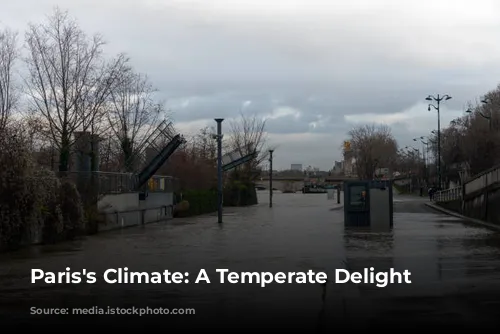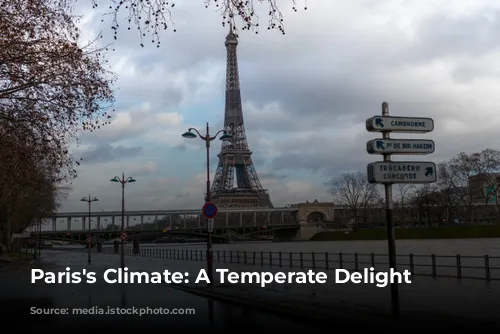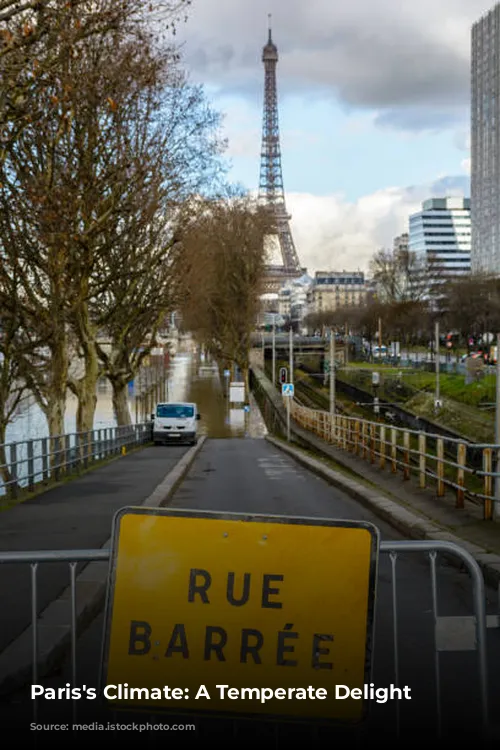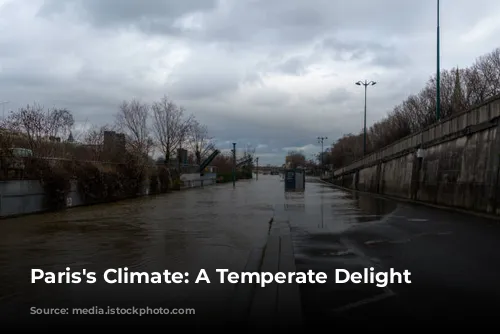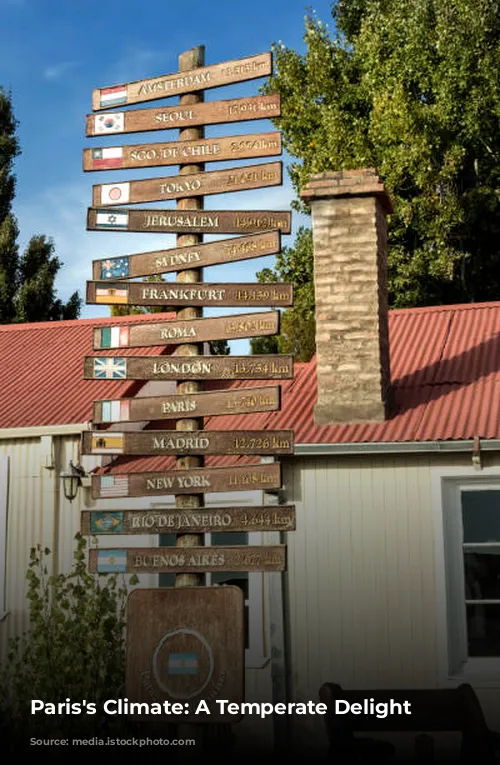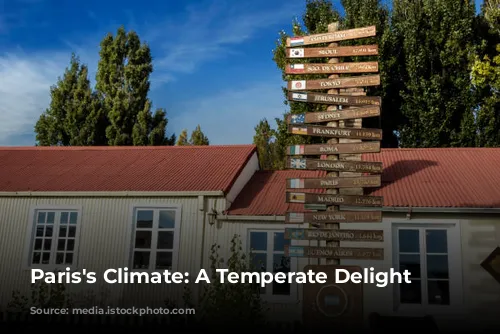Nestled on the western edge of Europe, Paris enjoys a pleasant climate, influenced by the gentle Gulf Stream. Temperatures are generally mild, with summers reaching a comfortable 19°C (66°F) and winters averaging around 3°C (37°F). While the weather is typically mild, it can be quite capricious, especially during the spring and winter months, when brisk winds can bring a chill. The city experiences a touch of frost for about a month each year, with snow falling on roughly half of those frosty days. Paris has made significant strides in reducing air pollution, and its water purification system ensures that tap water is safe to drink. So, whether you’re strolling along the Seine or enjoying a café au lait, you can breathe easy in the City of Lights.
A Journey Through Paris’s Walls
Throughout history, Paris has grown and evolved, its expansion marked by the construction of walls that defined its boundaries. The Île de la Cité, the historical heart of the city, served as a defensive stronghold against barbarian invaders in the 3rd century. A wall was built here using stones salvaged from a Roman town on the Left Bank that was destroyed by fire. This wall would be rebuilt multiple times over the centuries, a testament to its importance in protecting the city. The earliest bridges, such as the Petit Pont and the Pont au Change, were fortified with gates and castles, demonstrating the importance of protecting access to the island.
In the late 12th and early 13th centuries, King Philip II constructed a new wall that extended to protect settlements on both banks of the Seine. Centuries later, Charles V expanded the fortifications, building the Bastille fortress to defend the eastern approaches and the Louvre fortress to guard the west. Louis XIV replaced the walls of Charles V with the Grands Boulevards, tree-lined avenues that transformed the city’s landscape. The Saint-Denis Gate and the Saint-Antoine Gate were adorned with triumphal arches, majestic reminders of the city’s rich history.
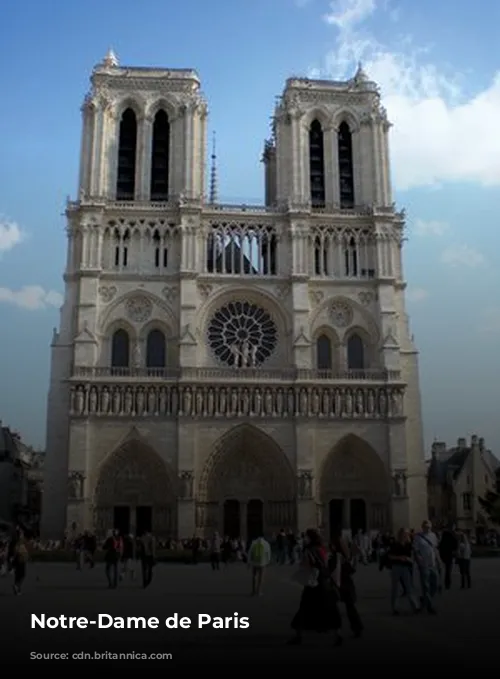
From Tollhouses to Defensive Walls
In the latter half of the 18th century, a new wall was built with 57 tollhouses, where tax collectors levied duties on goods entering the city. These tollhouses, remnants of a bygone era, still stand today as a reminder of Paris’s evolving economic landscape. The final wall, built in the mid-19th century, was a genuine military installation with a network of forts that guarded the city’s periphery. This wall encompassed several outlying hamlets, adding to the city’s ever-expanding territory.
The rapid economic growth that followed the collapse of Napoleon III’s empire, fueled by the Industrial Revolution, led to a population surge in Paris. The city’s infrastructure needed to adapt, and the visionary city planner, Baron Haussmann, responded by demolishing the tollhouses and constructing wide, straight boulevards that cut through the city’s labyrinthine streets. These boulevards, a symbol of Paris’s urban renewal, eventually replaced the 19th-century walls, transforming the city’s appearance and facilitating its growth.
The Heart of Paris: Île de la Cité
The Île de la Cité, a ship-shaped island nestled in the Seine, is the historical heart of Paris, a place where centuries of history have left their mark. It’s a captivating place, with eight bridges connecting it to the riverbanks and a ninth leading to the Île Saint-Louis, its smaller neighbor. The Pont Neuf, built between 1578 and 1604, is the oldest bridge in Paris, despite its name, which translates to “New Bridge.” Its sturdiness has become legendary, so much so that Parisians often use the expression “solid as the Pont Neuf.” The bridge’s design features a central point resting on the island’s tip, with five arches extending to the Left Bank and seven to the Right Bank. The parapet corbels are adorned with more than 250 grotesque masks, whimsical details that add to its charm.
The Pont Neuf’s half-moon bays, designed as the first sidewalk in Paris, once buzzed with street vendors, transforming the bridge into a lively marketplace. Over two centuries, it served as the main street and fairground of Paris, a bustling hub of commerce and activity. Although the bridge undergoes regular maintenance, the main structure remains essentially the same as it was centuries ago. Just downstream from the Pont Neuf, the tip of the Île de la Cité transforms into a triangular park, a serene oasis amidst the city’s hustle and bustle. A wide cobbled quay surrounds the park, a popular spot for sunbathers and lovers. A bronze equestrian statue of King Henry IV, who insisted on the Pont Neuf’s completion, stands majestically at the park’s entrance. This statue, a 19th-century reproduction of the original 1614 statue, was the first to grace a public space in Paris.
A Journey Through Time: From Palace to Prison
Across the park, a narrow entrance leads to the Place Dauphine, named after the future Louis XIII, Henry IV’s heir. This square was once a triangle of red-brick houses, but a portion was demolished in 1871 to make way for the Palace of Justice.
The Palace of Justice, built on the site of the early Roman governor’s palace, has seen countless transformations over the centuries. King Louis IX (St. Louis) rebuilt it in the 13th century, and Philip IV (the Fair) added the Conciergerie, a grim gray-turreted building with impressive Gothic chambers. The Great Hall, once the meeting place of the Parlement, the high court of justice, was renowned throughout Europe for its Gothic beauty. Fires and destruction over the centuries have left their mark, but the Great Hall still stands, serving as a waiting room for the courts housed in the Palace of Justice. In the adjoining first Civil Chamber, the Revolutionary Tribunal sat during the French Revolution, sending countless victims to the guillotine. These victims were taken through the dungeons of the Conciergerie to await their fate, a chilling reminder of the dark history of the palace.

Sainte-Chapelle: A Gothic Masterpiece
Within the palace courtyards lies the Sainte-Chapelle, a masterpiece of Gothic Rayonnant style. Built between 1243 and 1248 at the behest of Louis IX, it is a testament to the architectural brilliance of the era. The architect, possibly Pierre de Montreuil, daringly balanced vaulted ceilings on slender columns, with the walls between constructed of stained glass. This exquisite chapel was built to house the Crown of Thorns, believed to be the very one worn by Jesus at his crucifixion. Louis IX had purchased this precious relic from the Venetians, who held it in pawn. Other holy relics, including nails and fragments of the True Cross, were added to the chapel’s collection. Today, these relics are housed in the treasury of Notre-Dame.
In the 19th century, King Louis-Philippe and his successor, Napoleon III, initiated a “sanitization” project on the island, a massive undertaking that included clearing old structures, widening streets and squares, and constructing new government buildings, including portions of the Palace of Justice. The section of the palace bordering the Quai des Orfèvres, once the goldsmiths’ and silversmiths’ quay, became the headquarters of the Police Judiciaire, Paris’s municipal detective force. Across the boulevard du Palais is the Police Prefecture, another 19th-century structure. On the far side of the prefecture is the Place du Parvis-Notre-Dame, an open space expanded by Haussmann. The Hôtel-Dieu, Paris’s first hospital, was relocated from the riverbank to the inland side of the square, its current buildings dating back to 1868.
Paris, with its boulevards, monuments, gardens, plazas, and bridges, is a city that embodies both the grandeur and the intimate charm of a European capital. A UNESCO World Heritage site, it is a city that continues to draw visitors from around the world, eager to experience its rich history, vibrant culture, and undeniable beauty.
